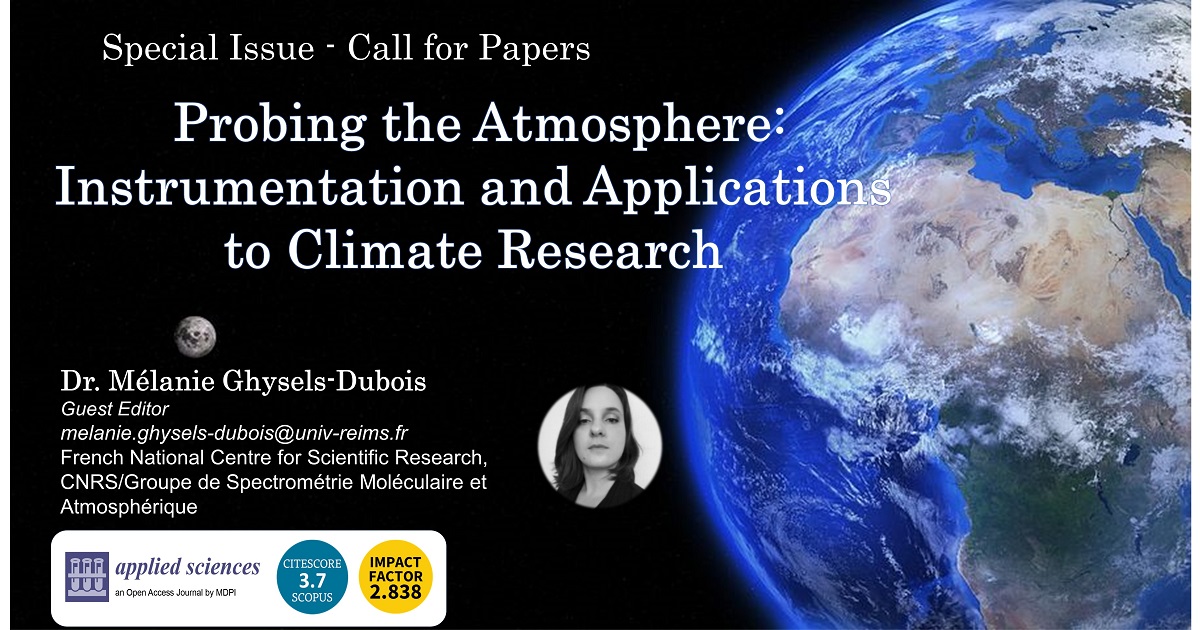- 2.5Impact Factor
- 5.5CiteScore
- 20 daysTime to First Decision
Probing the Atmosphere: Instrumentation and Applications to Climate Research
Special Issue Information
Dear Colleagues,
Earth’s atmosphere is an essential component of the climate system. To better understand climate change and its cause, a comprehensive understanding of its behaviour is necessary, which can be acquired through measurements of its temperature, its composition and clouds’ occurrence and radiative properties. The validation of climate model simulations, which relies on high-quality data records, is also essential for climate prediction.
Anthropogenic emissions have drastically altered the stratosphere’s composition, including the stratospheric chemical equilibrium, the ozone layer integrity and the stratospheric circulation pattern. Such alterations have further affected tropospheric weather, directly impacting populations throughout the world.
Most of the interactions between the stratosphere and the troposphere occur in the boundary region known as UTLS (Upper Troposphere–Lower Stratosphere), which is very difficult to observe from the Earth’s surface or with satellite instrumentation. In situ observations, together with satellite observations offering a global picture of atmospheric composition, are essential for climate reanalysis and the calibration and validation of satellite-borne observations to enable the production of multi-decadal Climate Data Records (CDRs) and acquire information about ECVs. Furthermore, the comparison of climate outputs with observations could us help evaluate and improve climate models.
This Special Issue will focus on:
- Recent advances in situ airborne techniques and climate observations;
- The report of recent improvements brought about by validation of satellite observations;
- Subsequent improvement in climate modelling.
Dr. Mélanie Ghysels-Dubois
Guest Editor
Manuscript Submission Information
Manuscripts should be submitted online at www.mdpi.com by registering and logging in to this website. Once you are registered, click here to go to the submission form. Manuscripts can be submitted until the deadline. All submissions that pass pre-check are peer-reviewed. Accepted papers will be published continuously in the journal (as soon as accepted) and will be listed together on the special issue website. Research articles, review articles as well as short communications are invited. For planned papers, a title and short abstract (about 100 words) can be sent to the Editorial Office for announcement on this website.
Submitted manuscripts should not have been published previously, nor be under consideration for publication elsewhere (except conference proceedings papers). All manuscripts are thoroughly refereed through a single-blind peer-review process. A guide for authors and other relevant information for submission of manuscripts is available on the Instructions for Authors page. Applied Sciences is an international peer-reviewed open access semimonthly journal published by MDPI.
Please visit the Instructions for Authors page before submitting a manuscript. The Article Processing Charge (APC) for publication in this open access journal is 2400 CHF (Swiss Francs). Submitted papers should be well formatted and use good English. Authors may use MDPI's English editing service prior to publication or during author revisions.

Benefits of Publishing in a Special Issue
- Ease of navigation: Grouping papers by topic helps scholars navigate broad scope journals more efficiently.
- Greater discoverability: Special Issues support the reach and impact of scientific research. Articles in Special Issues are more discoverable and cited more frequently.
- Expansion of research network: Special Issues facilitate connections among authors, fostering scientific collaborations.
- External promotion: Articles in Special Issues are often promoted through the journal's social media, increasing their visibility.
- e-Book format: Special Issues with more than 10 articles can be published as dedicated e-books, ensuring wide and rapid dissemination.

